#places: yoshinogari
Explore tagged Tumblr posts
Text
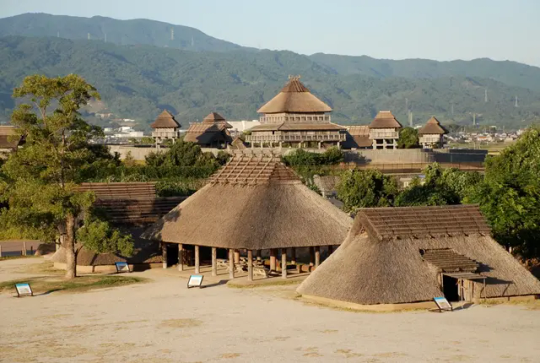
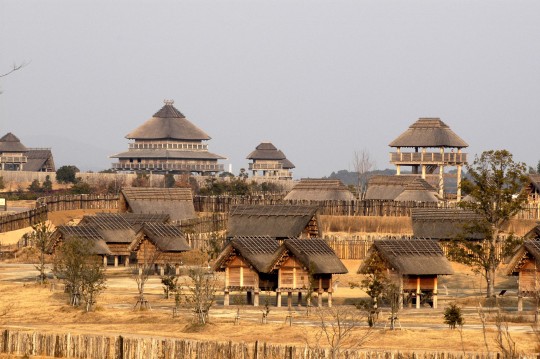
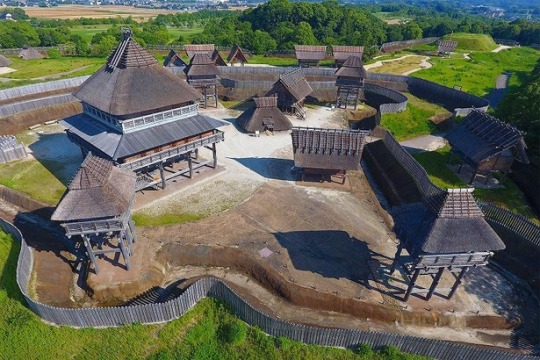
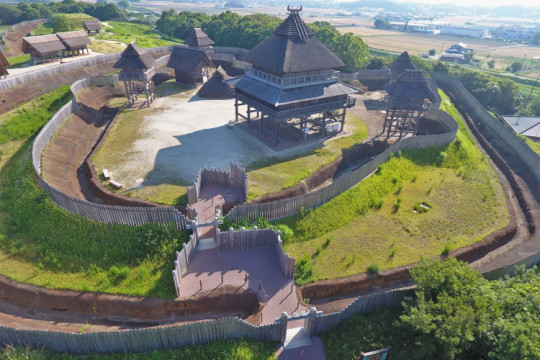
Sean bienvenidos, japonistasarqueológicos, a una nueva entrega de arqueología nipona, una vez dicho esto pónganse cómodos qué empezamos. — En la publicación anterior estuvimos hablando de las ruinas de Yoshinogari, que datan del período Yayoi (300-250) pero en este caso del Yayoi tardío y se localizan en la prefectura de Saga. Esta vez vamos a profundizar un poco más en dicho yacimiento. En la década de 1928-1986 y hasta el presente se han estado hallando restos arqueológicos nuevos. Pero las excavaciones y las investigaciones empezaron en 1928, esta fecha corresponde a la era taisho, también se realizaron excavaciones en Fukuoka la prefectura vecina, principalmente ligados a dos temas, la agricultura y la innovación industrial. En la prefectura de saga, se encontraron vasijas del periodo Yayoi, hasta del periodo Nara, hay que entender que el lugar ha podido ser utilizado en periodos históricos simultáneos, desde la prehistoria hasta nuestros días, como ya mencionamos anteriormente, el yacimiento se localiza cerca del mar de Ariake. A 3 kilómetros nos encontramos las ruinas de Mitsunagata, que estaría cerca de la puerta del parque arqueológico. - En la década de los años 50, se desentierran en las zonas de cultivos, ataúdes de tinajas. En 1928 aparecen: brazaletes de conchas y cuencos de vidrio. Pero no será hasta la década de los años 70 cuando se hacen excavaciones a gran escala, inclusive prospecciones, al noreste de Yoshinogari en las que se encontraron, espejos de bronce y armas de hierro. Se hallaron restos de edificios que se creen que son almacenes de piso elevado. 1980-1982, se excavó arroz carbonizado, esto nos permitirá saber cuál era la dieta y la procedencia del mismo. En 1986, por motivos industriales y por el canal de agua en la prefectura de Saga que comunica el río Chikugo, hasta el río Kase, esto desentierra restos de fosos y huecos de postes de madera. — Espero que os haya gustado y nos vemos en próximas publicaciones, que pasen una buena semana. - 日本の考古学者の皆さん、日本の考古学の新しい記事へようこそ。そうは言っても、気を楽にして始めましょう。 — 前回は、弥生時代(300~250年)、今回は弥生後期、佐賀県にある吉野ケ里遺跡についてお話しました。 今回はこの預金についてもう少し詳しく掘り下げていきます。 1928 年から 1986 年の 10 年間と現在に至るまでに、新しい考古学的遺跡が発見されています。 しかし、発掘調査が始まったのは大正時代にあたる1928年で、隣県の福岡でも主に農業と産業革新という2つのテーマに沿った発掘調査が行われました。 佐賀県では弥生時代から奈良時代の器物が出土しており、先史時代から現代に至るまでの同時期に使われていた可能性があることは、前述したとおりです。有明海の近く。 3キロほど離れたところに、遺跡公園のゲート付近にある三長田遺跡がある。 - 50年代の10年間に、栽培地域で壺の棺が発掘されました。 1928年に貝殻のブレスレットとガラスのボウルが登場しました。 しかし、吉野ヶ里の北東で測量を含む大規模な発掘が行われ、青銅鏡や鉄製の武器が発見されるのは70��代の10年になってからである。 高層倉庫とみられる建物跡が見つかった。 1980年から1982年にかけて焦げた米が発掘され、その食性や起源を知ることができます。 1986年、産業上の理由と、筑後川から嘉瀬川につながる佐賀県の水路の堀と木の柱穴の遺跡が発掘されました。 — 気に入っていただければ幸いです。今後の出版物でお会いしましょう。良い一週間をお過ごしください
Welcome, Japanese archaeologists, to a new installment of Japanese archaeology, having said that, make yourself comfortable and let's start. — In the previous post we were talking about the Yoshinogari ruins, which date from the Yayoi period (300-250) but in this case from the late Yayoi and are located in the Saga prefecture. This time we are going to delve a little deeper into said deposit. In the decade of 1928-1986 and up to the present, new archaeological remains have been found. But the excavations and investigations began in 1928, this date corresponds to the Taisho era, excavations were also carried out in Fukuoka the neighboring prefecture, mainly linked to two themes, agriculture and industrial innovation. In the prefecture of saga, vessels from the Yayoi period to the Nara period were found, it must be understood that the place could have been used in simultaneous historical periods, from prehistory to the present day, as we mentioned above, the site is located near of the Ariake Sea. 3 kilometers away we find the ruins of Mitsunagata, which would be near the gate of the archaeological park. - In the decade of the 50s, coffins of jars were unearthed in the cultivation areas. In 1928 they appear: shell bracelets and glass bowls. But it will not be until the decade of the 70s when large-scale excavations, including surveys, are made northeast of Yoshinogari in which bronze mirrors and iron weapons were found. Remains of buildings believed to be high-floor warehouses were found. 1980-1982, charred rice was excavated, this will allow us to know its diet and origin. In 1986, for industrial reasons and for the water channel in Saga Prefecture that connects the Chikugo River, to the Kase River, this unearths remains of moats and wooden post holes. — I hope you liked it and see you in future publications, have a good week.
#日本#韓国#考古学#遺跡#佐賀県#九州#歴史#先史#新石器時代#文化#吉野ヶ里遺跡#地理#弥生時代#有明海#唐津市#鍋岳遺跡#ユネスコ#Japan#Korea#Archaeology#Ruins#Saga Prefecture#Kyushu#History#Prehistory#Neolithic Age#Culture#Yoshinogari Ruins#Geography#Yayoi Period
46 notes
·
View notes
Text




Announcement for tomorrow's edition of "SHOW Channel".
"SHOW Channel" takes a one-night, two-day trip to Kyushu, where the variety show dives into the world-famous semiconductor factory for the first time and learns about the active Aso volcano.
The programme features Sakurai Sho, Yoshimura Takashi ("Heisei Nobushi Kobushi"), Kotoge Eiji ("The Bikings") and Shin'ichi Hatori.
The first stage is the Yoshinogari ruins, ruins typical of the Yayoi period. Even Sakurai, who is infiltrating for the first time, and Yoshimura, who is usually an avid history buff, seem confused, saying, "I don't understand anything about the Yayoi period". Hatori can't contain his excitement and says, "Yayoi is magnificent, it's the most mysterious era", and explains the highlights of the ruins. Kotoge tells him, "Let's go and tell him" as he makes his way inside.
The village is surrounded by a wooden fence, and there is a menacing atmosphere as if it is defending itself from an outside enemy. It is said that wars often broke out during the Yayoi period, and the ruins of Yoshinogari, which performed a defensive function to protect the village from foreign enemies, were chosen as one of the hundred best castles in Japan as the oldest castle. Sakurai, who imagined the Yayoi period = "an idyllic rice-growing landscape", was quickly captivated by the mysterious enchantment and said: "My image of Yayoi is completely different!"
In the southern inner fence, the area where the leaders of the village are said to have lived, there are many modern objects of the time that are said to have been brought from China during the Three Kingdoms period, such as as as a watchtower and an equestrian platform for observing the surroundings from the "Novel of the Three Kingdoms". Yoshimura was excited and said: "The knowledge of the time when the romance of the three kingdoms was fiercely fought over is here!" What great discovery of the century, made at the ruins of Yoshinogari thirty-one years ago, disproves conventional wisdom?
"The Northern Inner Wall", where the most important people lived, was more rigorously defended than the Southern Inner Wall, with "staggered entrances and exits", as in the Sengoku period, so that it was not easily breached. "The Main Shrine", standing in the centre, is a prestigious place where village leaders gathered and held meetings. When Sakurai and his colleagues go inside, they are welcomed by the leaders and the man who holds the meeting in a ceremonial manner. What was talked about in the main temple, why the Yoshinogari ruins were called Yamataikoku, and the truth about the Yayoi period that will be revealed in two thousand years. In addition, we will also enter the ‘mysterious area’ where excavations are now underway.
On the second day, the company headed to Mount Aso, which is visited by more than one million people a year. The main attraction is the world's largest caldera, formed by an eruption ninety thousand years ago and measuring twenty-five kilometres north-south and eighteen kilometres east-west. Star Kumamoto Kumamon, who greets Sakurai and his colleagues, teaches them, "What is a caldera?" After a lecture on the caldera's birth mechanism at the adjoining Aso Volcano Museum, the company travels to the crater of Mt. Aso.
Mount Aso, which continues to be volcanically active, has many craters in its large caldera, and it is one of the few places in the world where you can see active craters up close. Looking at the erupting crater, Sakurai and his colleagues are shocked by its power and exclaim, "It's pouring so much!" "It's dangerous!" "Is this really happening?'" The foursome are caught in an emergency situation that can only be expected from an active volcano.
Afterwards, continuing to learn the secrets of Mount Aso, such as seeing the rare scenery created by the eruption and witnessing the giant "that thing" that shows the ferocity of the eruption. The company also learnt about the secrets of Mount Aso that they didn't know about and were very pleased, saying: "It was really interesting" and "I can feel the power of the earth".
The company then boarded a bus to a popular eatery spot in Aso. Even when the cameras weren't rolling, the friendly foursome laughed and reminisced about the previous night's hilarious events as the bus arrived at its destination in no time. It's a very popular dairy place and people can't stop asking for a second serving of the exquisite milk produced by Aso. In addition, the rosary first penetrated the Japanese factory of "TSMC", a global semiconductor manufacturer from Taiwan, for the first time on the variety show. "That guy" who understands semiconductors will explain. Learn in detail about semiconductors you don't hear about now.
The last stop on the trip was Kurokawa Onsen.In the car, the four split into two groups and visited six different hot springs, each with different qualities. They sweated it out in the impressive open-air baths and savoured the fine cuisine of Kumamoto.Sakurai, looking back on the drinking trip, was pleased with filming with four good friends: "We're getting to know each other at a very good pace, and since we're spending so much time together on set, we're getting to know each other better and better".
And I remind you that the episode will be broadcast tomorrow at 06.00-08.00 A.M. on european time on "Nippon TV". Don't miss it!
#Sakurai Sho#櫻井翔#Arashi#嵐#Yoshimura Takashi#Heisei Nobushi Kobushi#Kotoge Eiji#The Bikings#Shinichi Hatori#1 Oku 3000 Mannin No SHOW Channel#Japanese Entertainment Programme#Nippon TV
4 notes
·
View notes
Photo









Yoshinogari Historical Park today, including the mirror I made.
#photos#japan 2019#photos: japan 2019#places: yoshinogari#photos: scenery#photos: shrines/temples/castles
22 notes
·
View notes
Photo





april 1st
So a lot of these pictures are going to look at bit same-y but bear with me it was really cool
So! This is an ancient burial ground called Yoshinogari Historical Park! (please follow that link to read more about it)
My friend really likes Japanese History and this site is really significant for the Yayoi period of Japan as well as the most likely location of the country of Yamatai. This place is filled with significant historical artifacts and burial grounds.
These pictures are of the inner village area where the king/leader lived as well as the highest ranking officials. According to the cute old man who was a volunteer guide, around 60 people probably lived in this particular area.
#this has all obviously be rebuilt#but it looks really authentically rebuilt#like the wood was all cut and formed by hand#stunning really#saga prefecture#キュー
1 note
·
View note
Text
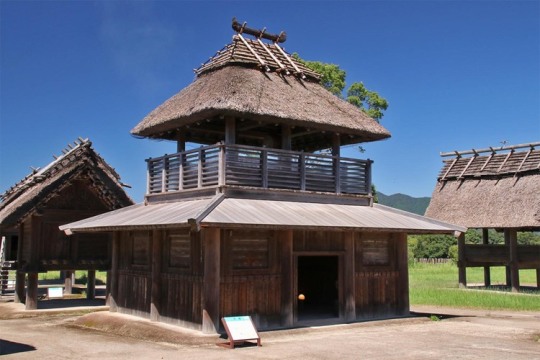

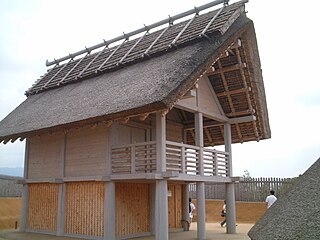


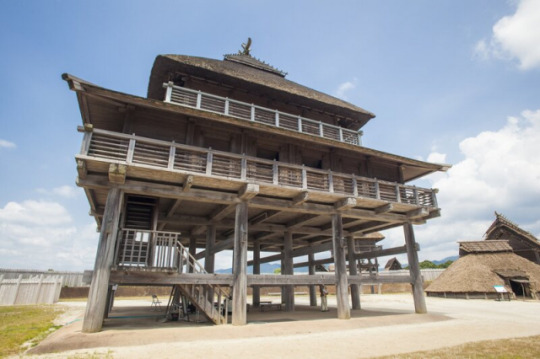
Sean bienvenidos, japonistasarqueológicos, a una nueva entrega de arqueología nipona, una vez dicho esto pónganse cómodos qué empezamos. - Nos volvemos a trasladar a la prehistoria japonesa que, cada día, nos sorprende con un nuevo hallazgo arqueológico. Las ruinas de Yoshinogari, datan del periodo Yayoi(III-IV) pero en este caso del Yayoi tardío y se localizan en la prefectura de Saga¿Cuándo llegó el arroz a japón? Y¿por dónde llegó? Hay dos teorías: una que llegó de china y la otra desde Corea hasta la isla de Kyushu a través del mar de Ariake. El enorme asentamiento está rodeado por tres fosos y es la raíz de los castillos en Japón, ha sido seleccionado como uno de los 100 castillos más famosos de Japón. - En el periodo Yayoi, se caracteriza porque es cuando aparecen las clases guerras y las clases dirigentes a raíz de la acumulación de poder, esto corresponde a los jefes locales, por ejemplo: La residencia de la clase dominante en el recinto interior sur, no confundir con realeza japonesa, hay que recordar que a los poblados se les instalaba un punto religioso, por aquella época predominaba el Sintoismo como: es el caso del santuario principal construido en el recinto interior norte. - El yacimiento cuenta con atalaya del recinto interior sur, de carácter defectivo, al sur se encuentra el pueblo con viviendas tipo foso y almacenes para guardar el arroz rojo que era el que se cultivaba en aquella época y en la ciudad de Karatsu, también en la prefectura de Saga, se encuentran las ruinas de Nabatake, las ruinas de cultivo de arroz más antiguas de Japón. - Durante el periodo Yayoi y Kofun tuvieron lugar una serie de migraciones desde la península de corea, esto trajo consigo que las poblaciones coreanas y japonesas de la zona se mezclaran generando mestizos, además de transmitir sus conocimientos de la agricultura. - Espero que os haya gustado y nos vemos en próximas publicaciones, que pasen una buena semana. Welcome, Japanese archaeologists, to a new instalment of Japanese archaeology, so make yourselves comfortable and let's get started. - We move back to Japanese prehistory, which surprises us every day with a new archaeological find. The ruins of Yoshinogari, dating from the Yayoi period (III-IV) but in this case from the late Yayoi period, are located in the prefecture of Saga When did rice arrive in Japan? And where did it arrive? There are two theories: one that it came from China and the other from Korea to the island of Kyushu via the Ariake Sea. The huge settlement is surrounded by three moats and is the root of castles in Japan, it has been selected as one of the 100 most famous castles in Japan. - The Yayoi period is characterised by the emergence of the warring and ruling classes as a result of the accumulation of power, this corresponds to the local chiefs, for example: The residence of the ruling class in the southern inner precinct, not to be confused with Japanese royalty, it should be remembered that the villages had a religious point installed, at that time Shintoism predominated, such as the main shrine built in the northern inner precinct. - The site has a watchtower in the southern inner enclosure, which is defective, to the south is the village with moat-like dwellings and warehouses for storing the red rice that was cultivated at the time, and in the town of Karatsu, also in Saga Prefecture, are the ruins of Nabatake, the oldest rice cultivation ruins in Japan. - During the Yayoi and Kofun period a series of migrations from the Korean peninsula took place, which resulted in the mixing of the Korean and Japanese populations in the area and the passing on of their knowledge of agriculture. - I hope you liked it and see you in future posts, have a good week.
#日本#韓国#考古学#遺跡#佐賀県#九州#歴史#先史#新石器時代#文化#吉野ヶ里遺跡#地理#弥生時代#有明海#唐津市#鍋岳遺跡#ユネスコ#photo#japan#archaeology#archaeologicalrests#Prefectureofaga#Kyushu#history#prehistory#neolithic#riceculture#Yoshinogariruins#geography#yayoiperiod
36 notes
·
View notes
Photo
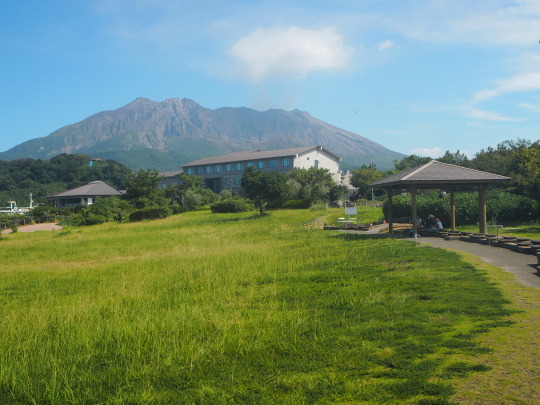




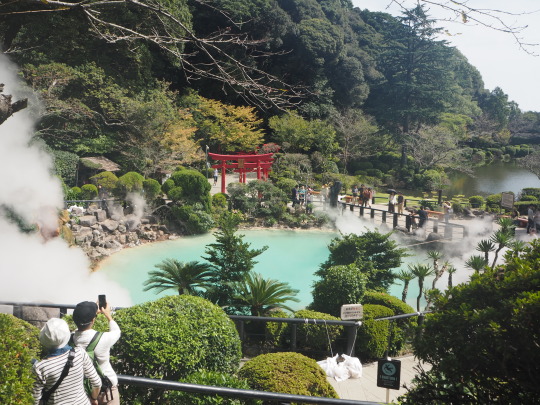


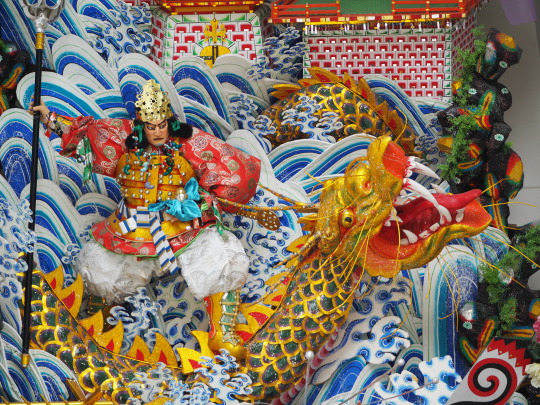
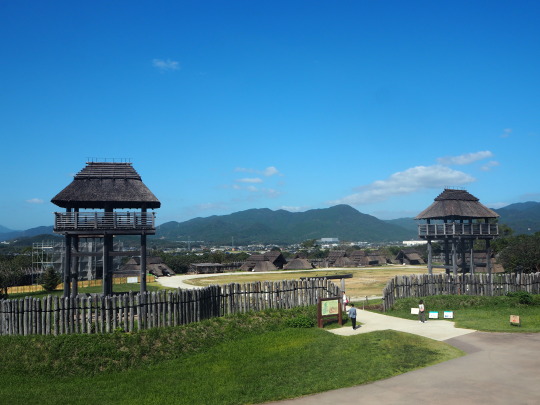
An attempt to summarize a week in Fukuoka in pictures.
In order:
Sakurajima volcano as seen from the footbath
Sakurajima erupting
Karatsu castle as seen from Maizuru bridge
Kunchi festival floats on display in Karatsu
view from Karatsu castle on Niji no matsubara pine forest
Umi jigoku (sea hell) in Beppu
one of the hells at Kamado jigoku (cooking pot hell) in Beppu
Kushida shrine in Fukuoka
detail on the float on display at Kushida shrine
Yoshinogari historical park
#photos#japan 2019#photos: japan 2019#photos: fav#places: sakurajima#places: karatsu#places: beppu#places: fukuoka#places: yoshinogari
2 notes
·
View notes
Text
Back in time
One last good evening from Fukuoka before I leave Kyushu!
Wow, time is really flying, I’m already halfway through my trip… but, that’s still two full more weeks to go, so plenty of things to look forward to!
First things first, typhoon aftermath. I’m very fortunate to be able to report that the typhoon was more or less a non-event on Kyushu. The only thing we really noticed here was a strong wind picking up, and apparently waves were high, because a typhoon that big messes up the atmosphere over quite the area. Still, looking at the news from Tokyo and surroundings, Kyushu got out of it really, really well. Luckily everyone I know in the region is alright, so that’s a relief, but it’s still been quite the event.
In better news, I still got to do a day trip today! I went further back in history than I’ve been before; off we go to the Yayoi period, which lasted from 1000 BC until 300 AD. Below my report on visiting Yoshinogari Historical Park!
Well, first things first: I needed the train to get there. As it turns out, there is one train a day that goes from Hakata station straight to Yoshinogarikoen, and that’s the Midori 5 – which is connected to the Huis ten Bosch train, haha. I had taken that one before back in 2015, but now, I got off several stations earlier.
Yoshinogarikoen station is already called after the park, although it’s still a 15 minute walk from there. Not to worry, though. It’s an all but entirely straight road from the station, and in the unlikely case you get confused, there are boards around every hundred meters telling you where to go. It felt like walking through the countryside before I got there, with farmers going about their business around me.
I secured a ticket and received a map last-minute, which was just as well, because wow, this park is huge. Granted, parts of it serve as festival grounds and recreational areas, but it’s big enough that there’s a bus driving around to cut some time. I, uh, accidentally still skipped some bits…
Anyway! The Yoshinogari hills were initially destined to become industrial area for the Saga prefecture, until they discovered all kinds of ruins and relics here and put those plans on hold. Starting from the 1980s, studies and excavations here found that it was actually one of the largest moat encircled villages from the Yayoi period. It was during this time that the cultivation of rice and permanent settlement began, so quite the important moment in history. There’s even some controversy whether or not this could have been the capital of ancient Yamatai, a center of power in that time and which was supposedly ruled by shaman Queen Himiko, the first ruler of (part of) Japan acknowledged in Chinese chronicles.
At any rate, much of the historical park is dedicated to reconstructing the settlements to the way they must have once been. I started at the Minami Naikaku, the South Inner Enclosure, which has several watchtowers and the king’s residence. You could enter most of the residences here, although you definitely have to duck, haha, and some featured mannequins while others featured artifacts. It was pretty cool exploring here, hopping in and out and getting a feel for life in that period.
Across the moat, I found the storehouses and market as well as the North Inner Enclosure, Kita Naikaku. The same principles applied, although the North Inner Enclosure is extra special, as it is the most sacred place featuring a huge ceremonial hall. Upon entering, mannequins were seated in a meeting with the king on the first floor. Further up on the second floor, the high priestess was attempting to be possessed with their ancestors or gods in order to convey their message. The attention to detail was pretty amazing, and this area too was great to walk around in. In the distance, I could hear the festival music, and I even caught a Lilo & Stitch song, haha. I thought I was imagining things, but nope, I quick peek from a watchtower taught me they were performing the dance and everything. So that’s ancient and modern history right next to each other.
As I continued, I came to the last part of life in the Yayoi period: burial grounds. On Okinawa, I’d learnt of the bone washing ceremony instead of cremation. Here, however, the bodies were immediately buried in jars, which were of course fairly huge to contain an adult person. There was a field full of jars, but there was also a burial mound nearby. Upon entering, it turned out that these jars were the real thing. They’d reconstructed the excavation site as it had been when first discovered, including the jars and the sword fragments found within. So that was quite the impressive sight.
At this point, I decided to take that bus to the start of the park, although I wasn’t done yet. I got off at the West gate, although I only found recreational areas here and some lovely flowers and a pond. Continuing on to the East gate, through which I’d entered the park, I stumbled across the South village, which had the buildings for the ‘common’ people recreated (the areas I’d visited before were for the elite). I rushed past here, intending to check it out later, as I was getting pretty hungry and was curious to the menu.
I ended up with a dish with Saga prefecture beef croquette – things, haha, and rice native to the region. It was delicious and powered me right up, so I went outside again – and promptly got sidetracked, as there was a giant tent with workshops. I entered it to check it out, and as it turns out, during weekends there are some extra workshops, including one for mirror making. It wasn’t cheap, but the resulting mirror looks lovely, and mirrors are closely associated with the sun goddess Amaterasu (and also aforementioned Himiko), so I was kind of sold already, haha. A volunteer of the park kindly guided me through the process of application, and then I could get to work immediately! I got to do everything from casting molten silver in the mold, to sanding, and sanding, and sanding, and eventually polishing the mirror. Sadly there was a little hole in my mirror from casting, so they offered me a replacement, but I was like no, this is my mistake, my mirror, I’m gonna own up to it, haha. Also, who is gonna believe I made my own mirror if it looks perfect?
It was hard work and it took quite a bit longer than the scheduled hour I think, but the people here were really nice and helpful, and I even got to chat for a bit with the volunteer guide about Japan in all its aspects.
That being said, I was very proud of my mirror, and it was also already past 4 PM with the park closing at 5, oops. I was getting kind of tired too (not to mention my hands from all that polishing), so I made my way back to the station. Oops, I accidentally skipped the commoner settlement and also the entire forest of ancient plants at the other side of the park... Surely I have to go back!
I caught a train to Shin-Tosu, where I got a shinkansen so quickly that I think I ended up back on Hakata station within 20 minutes or so, whoa. I made one more round through Canal City before having dinner here, and then I got back to my hotel room.
I’ve spent the better part of the evening repacking my suitcase, oops. I got it shut, though! Just need to get out my toiletries tomorrow morning for a bit, but it was fairly easy to close my suitcase, so I expect no trouble.
And so with that, the chapter on Kyushu closes. Fukuoka, thank you for hosting me again and for keeping me safe. I really enjoyed my time here, from the spectacle of Sakurajima to the charms of Karatsu and the hot springs of Beppu, from re-exploring bits of Fukuoka to traveling back in time today. Time has really flown here. It was my second time on Kyushu, and the second time I’m pleasantly surprised. Honestly, my only complaint is how big the spiders are, haha. (Well, bugs in general. As it turns out I had never seen a praying mantis in real life before, because I quite literally tripped over one today and proceeded to freak out over how big it was. It looked straight at me too, help.)
Tomorrow, I have an early train to catch to Okayama. I’m not entirely sure how that region is doing, since the winds and rain have been worse there, although not much compared to Tokyo and surroundings. Shinkansen from Okayama stopped running, but into the other direction. None of the trains I’ll take have been affected, so I’m not expecting a lot of trouble for now. We’ll see.
I’m sad to leave Kyushu behind, but also excited to revisit Okayama (and all of its peaches), so at least there’s something nice to look forward to.
Thank you for reading and see you tomorrow!
2 notes
·
View notes
Text
the end of a journey
And that wraps up my collection posts for this trip. How time has flown by…
As always, I like to do a final post in which I look back on my travelling, before I close this blog until my next trip. I am going to do that this time as well, but my reflections on Okinawa will be slightly different than expected, as in the early morning of October 31, the main buildings of Shuri Castle were destroyed in a fire. Thankfully there were no human casualties, but the loss of the castle cuts deep for Okinawa, and it would feel odd to just cheerily babble about visiting the castle without touching upon what happened a mere 4 weeks later (to the day, I now realize).
I uh, might have postponed this entry so that I could pretend I didn’t have to close the chapter of this trip, haha. But with my photo album done, all that’s left is my final words.
Now without further ado, the final post for Japan 2019!
One would think that after eight previous trips, another flight to Japan would feel like routine, but the start was already different since I needed a domestic flight transfer. However, being able to see the islands of Okinawa from the plane awed me, and definitely set the tone for my enjoyment of the main island. I arrived with fairly high expectations, and I got to say that Okinawa more than delivered. Although I confess it was slightly odd to stay along the Kokusaidori main street, as it’s so touristic and feels like a shopping street in Tokyo, but it still has its own Okinawan flavor. And I was so close to the ocean! I couldn’t believe how quickly I reached the shores, and even with a highway road above my head, it was great to trail through the water on my day of arrival.
Visiting Shuri Castle was on the top of my wish list, so I did that right on my first full day. Reading about the beautiful reconstructions and seeing the pictures definitely didn’t hold up to the real thing, and I could only admire the love and dedication that had gone into reconstructing this centuries old castle. It felt so completely different from the other Japanese castles, which it of course is, but I hadn’t expected to feel that so acutely. You could definitely tell how proud the people here were of the castle, and I can only hope that those whose livelihoods depended on the castle can get by now. It still feels surreal to think that the buildings are no longer there. There are logistical problems for rebuilding, although I don’t doubt they will get there in the end. It burnt down before, and rose from the most terrible of ashes. It will likely take decades, but considering how big a symbol this place is, there will definitely be something new. I do confess I kind of skipped war memorials during this trip to Okinawa, but the scars of the Battle of Okinawa was visible everywhere; and yet it was also noticeable how the people have come back from it. I can only hope their spirit will continue from hereon too and that this symbol will rise again.
Of course, I had no idea while I was there what would happen four weeks later, but I’m glad in retrospect that I took my time and uh, took as many pictures as I did. Nearby Tamaudun Mausoleum impressed me deeply as well, although I must confess that was due to the full package: the castle and the history and the mausoleum together, plus the pathway leading up to the building was short but absolutely lovely.
After that, I saw so many sights. I climbed the mountain to find Nakagukusu castle, where I had a blast feeling like I was in some weird limbo between a gothic European castle in ruins with crows flying by and, well, a subtropical island, with beautiful blue seas on both sides. Weirdly, it really looked like only the castle was clouded that day, as the sun was shining on both sea sides, but it just added to the atmosphere.
I went from super touristic but cheerful Okinawa World with its gorgeous caves to the genuine and wonderful museum, teaching me so much more about the islands, explored gorgeous gardens, and to top it all off, I got to spend a day on Tokashiki island, which really was the icing on an already delicious cake. The weather was lovelier than I could have even hoped for, the views were amazing, and I was honestly jealous of myself while I was there. This really was the picture perfect ‘tropical holidays’ right from the travel brochure, and although I think I’d get bored of it if I were to spend a whole week just chilling on the beach, it was an amazing way to end my week down south. Not to mention the submarine ride! I’m really glad I was tenacious and eventually lucked out and got on, because I wouldn’t have missed it for the world. It’s one thing to see coral reefs on tv or in an aquarium, but seeing them in the wild is awe inspiring. Luckily the Kerama Islands (which Tokashiki is the biggest of) are a national park and under protection, and I can only hope that we can all protect amazing sights like these all around the globe.
After a week of exploring something completely new, it was time to return to an old friend: Fukuoka, which I had stayed in for a week back in 2015. I had fond memories of staying there, and this week didn’t disappoint. The flight was so relaxed I would almost say I got rid of my fear of flying (not entirely, but it definitely diminished from here on), and then it was time to explore the places I had missed out on before! It was my first time seeing a typical conical and active volcano, and Sakurajima definitely didn’t disappoint. Karatsu had caught my eye in recent years, and I’m so happy I went there, because I had a delightful day and I was thoroughly charmed by this city. Beppu was highly touristic, but I had a good time exploring the hells anyway, and I’m easily amused, so getting to say ‘I went to hells and back’ won’t get old soon. The typhoon made me stay in Fukuoka for a day since I didn’t want to risk getting stranded, but I don’t regret it one bit as I finally got to see Kushida shrine in the sun and had a blast in Canal City. It was safe enough to go to Yoshinogari Historical Park next, and wow, there was so much to see and do that I definitely have to go back here sometime. And hey, I got to be crafty and made a mirror! I’m still unreasonably proud.
With the weather continuing to smile down on me, I hit Okayama next, where I finally got to dress up as a princess in the castle (I’m easily pleased) and saw the sights we sadly had to miss out on last year due to floods. Gorgeous sights and castles greeted me as I finally got to see more of Shikoku, and although I am definitely a bit weary of temples now (sorry, Onomichi), the views over the Inland Sea continue to impress. The weather was exceedingly kind to me and gave me blue skies over all castles, and so I happily checked off number 7 on the list of 12 original castle towers still remaining. Past the halfway point! I do love castles, haha.
My luck hadn’t run out yet as on my final day in Okayama, KOKIA was performing in Osaka. It was just an hour away from Okayama, the closest I was to Osaka the entire trip, so that left enough time to visit Universal Studios beforehand. And of course, seeing KOKIA live is always a magical experience (which is a nice bridge from the Wizarding World of Harry Potter I guess, haha). I’ve said it before, but even live recordings and DVDs can’t compare to the live experience, and I feel so privileged and blessed that this is my seventh time (!) getting to see her live. And this was my third time in a row getting to meet her for an autograph! I might get spoiled at this rate, haha. It was wonderful to hear songs from all those years ago as well as some newer favorites.
And although I hadn’t been looking forward to the long trip to Tokyo, this was in fact a very relaxed experience. I had so much leg space that my suitcase in front of me was no big bother, and the seats next to me stayed empty anyway. Getting back to Tokyo, and more specifically Ikebukuro, felt like coming home again, and I enjoyed soaking into the familiar sights (and uh, shopping, I have to admit).
This was the only part of my trip where I actually noticed the typhoons that had blown over or were on their way. Japan has taken quite the battering this year, with typhoons forming very late into the season, being more powerful than ever, with Hagibis being the tragic record. It had given me quite the scares, but all it really meant for me was a few windy days, two days of rain on 4 weeks total, and making it risky to leave Tokyo for the mountainous areas. The people here have suffered far more. I can only hope they recover well from this natural violence and that they can catch a break for a while.
Anyway, you can easily dump me in Tokyo for months on end and I will still have a great time. This city is so massive and there are plenty of places worth a second (or third, or ninth) visit, so it’s hard to imagine I’d ever get bored here. And since many of the series and games I like hail from Japan, I definitely took the chance to stock up on merchandise and go to cafés to let out my inner fangirl. Look, I grew up on Pokémon, I’m not gonna ignore the chance to have dinner with Pikachu. Rainy days aren’t so bad if you get to spend them in a museum so big that even a full day is barely enough to see everything, and I got to spend some extra days with my friend on top of it.
I have to admit I felt a bit bad about not using my JR pass much in that last week except for the Yamanote line, but that in no way diminished how much fun I had, and I confess to having cried a couple of times in my final days in Tokyo due to my impending return home. Of course, going on holidays is different from living somewhere, but I still feel like a piece of me was left behind in Japan way back in 2010, and so it hurts to part every time. That might sound dramatic, but that metaphor does explain why I feel so strongly about it.
The flight back gave me one last treat with the Fuji showing up through the clouds, marking the first time in all those flights when I actually got to see it from the plane. Sadly the picture I took on my phone isn’t super crisp, but it’s the best I could do at the moment, and really, there’s something about that mountain you can’t quite catch on camera anyway. The flight was calm and hardly affected my nerves, and though I didn’t sleep much, I managed to get home safe and sound without even falling asleep on the train or bus.
Of course, the jetlag was waiting for me with a big ol’ hammer, and it took a while for me to recover. A bit longer than expected, actually, although I suspect part of that was caused by just how much I’ve seen and done over those past 4 weeks. Look at how long this entry is getting, and I barely even touched on some days and impressions! I can’t believe I got to check off my entire list of places to visit until I got to Tokyo. I hadn’t thought my body could handle it, but I was pleasantly surprised, and I definitely feel in a better condition than ever. Seeing all these wonderful sights for sure invigorated me, so I don’t doubt it helped, but the relative ease with which I climbed those mountains also surprised me. Not that I’m complaining!
And that brings me back home. I’ve had two weeks to recover now, and I think my body has adjusted to being back in the Netherlands again. I’ve collected all my reports from this blog (and have apparently done NaNoWRiMo writing challenge a month early, as I surpassed 50,000 words written in a month, oops), my photos have been sorted out, I’ve put together a photo book for the collection, and… well, all that’s left is closing off this blog until the next trip. That won’t be this year anymore, haha, no more last-minute Christmas trips to Tokyo! Although I won’t deny it’s tempting, but I’d rather take the time to plan out my trip for next time.
I don’t know when that will be. Part of me really wants to see the cherry blossoms, but it’s a busy season, so I should be looking into flights and hotels already if I am set on doing so next year. Summer 2020 is out, though. I’d rather avoid the height of summer in Japan if at all possible, and well, with the Olympics and Paralympics next year, I think Japan really doesn’t need any more tourists in the mix, haha. So, who knows! I’ll have to wait and see where next year takes me, although I’d love to return to Japan as soon as possible. I still haven’t visited Hokkaido, after all, and I did plan out a lot of day trips from Tokyo that I didn’t get to do now.
I keep saying it, but I don’t think I’ll ever be done with Japan. Despite hardships, I am so happy I decided to study its language and culture, over a decade ago now. It really broadened my horizons, allowed me to meet new people, and introduced me to an immensely interesting country. Although I’m far from fluent (I really need to pick up my study books and at least increase my vocabulary, yikes), it still really helped finding my way here and getting in touch with people. Of course, I saw everything through a tourist’s eye, but I do my best to read up on the places I visit and get a better sense of the culture and history through first hand experience. Speaking the language to a degree definitely helps with that.
And so, I will now close this blog again until my next trip, which hopefully won’t take too long. Whether it’ll be a short hop over to Tokyo or a longer cross-country travel remains to be seen, but I can’t wait to find out!
Thank you for sticking with this blog and for reading all that in case you made it here, and see you soon!
3 notes
·
View notes